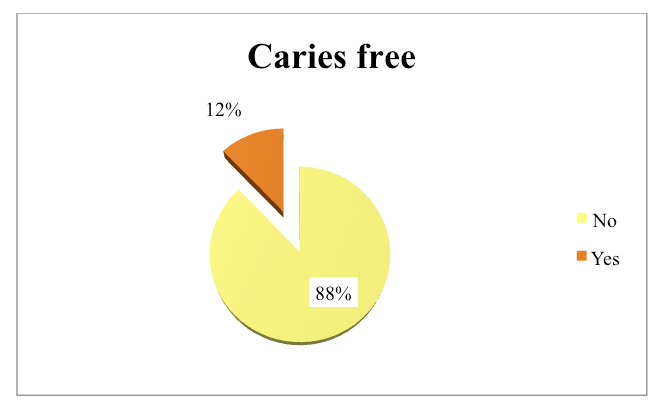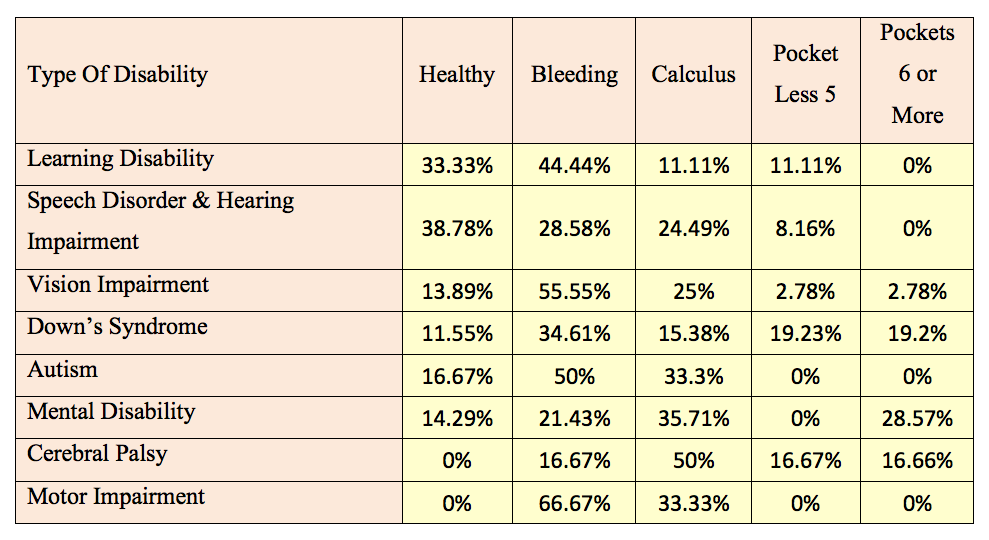Oral health is defined as “the state of being free from mouth and facial pain, oral and throat cancer, oral infection and sores, periodontal (gum) diseases, tooth decay, tooth loss, and other diseases and disorders that limit an individual’s capacity in biting, chowing, smiling, speaking, and (their) psychological wellbeing.” This article covers a descriptive cross-sectional study, using The WHO Oral health survey guidelines. The study was carried out among 149 pupils attending special needs centers in Wad Madani City, al Gazera State in 2017, of which 95 are males and 54 females.
Children with special needs have a higher prevalence of dental caries (the mean Decay Missing Filled Teeth (DMFT) 5.19±3.931-) and a high prevalence of periodontal disease with only 22.1 percent with healthy periodontium, and a lack of receiving dental services with one student who had a filled tooth in all of the study population. The mean DMFT increases with age and the prevalence of decayed and missing teeth is higher in males than in females, with the highest mean DMFT found in the Autism group and the lowest mean DMFT found in the hearing and speech disorder group. Only 12 percent were caries free and most of these students were in the group of hearing and speech disorder. The prevalence of periodontal disease using the Community Periodontal Index (CPITN) was 37.6 percent who had bleeding with probing, 24.8 percent have calculus deposits, 22. 1 percent have healthy periodontium, 8.1 percent have pockets of 4-5mm, while 7.4 % have pockets of 6 mm or more. More than one third of the speech disorder and hearing impaired group have healthy gingiva, 35.7 percent from the mental disability group have calculus deposition, and half of the Cerebral Palsy group have calculus deposition, and there was only one tooth filled in the hearing and speech group.
Table 1: The Correlation Between Mean DMFt and Age

Figure 1: The Percentage of Caries-free of the Total Population

Table 2: Distribution of CPTIN According to Type of Disability

Based on research results the dental health of children with special needs should be improved and they should be provided with dental services including regular checkups. The establishment of a referral system and oral health education could help to motivate children as well as their parents and teachers to maintain improved oral health care for children with special needs.


